WFN Men's World Rankings post Round 1 IC14
- Sunday, August 10 2014 @ 08:36 pm ACST
- Contributed by: Cam Homes
- Views: 2,103
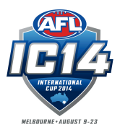
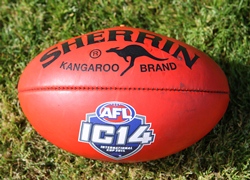
All the matches in Round 1 went pretty much as the Ranking Scheme predicted, that is, higher ranked country prevailed over its lower ranked opponent. Six of the seven matches that had a +/- 10.00 rating gap all produced over a +100 point wins for the favoured nation, although Great Britain’s win over France couldn’t be called close or lineball either, eg 12.17 (89) to 1.1 (7).
The two remaining matches that were expected to result in changes in rating points also were +100 point wins, South Africa 23.22 (160) d. Pakistan 2.2 (14) and Canada 19.5 (119) d. China 0.1 (1). This loss by China as predicted has seen China (31.36 rating points) fall to 18th below Germany (34.09).
Click full story to see the World Rankings standings after today's play.
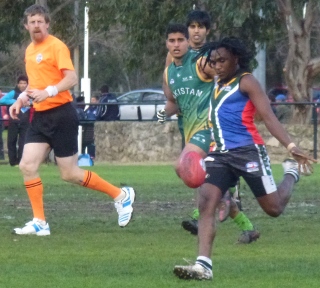
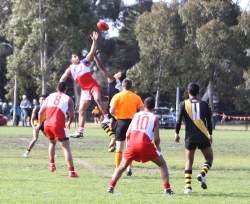 It was an icy Melbourne morning to kick off the International Cup. Tonga was scheduled to play India at Ransford Oval (Royal Park, Parkville) in one of two mens matches launching the 2014 tournament. The early start on a Sunday refused to deter the fans, with a number of early risers by the boundary, supporting both sides. National anthems were played and Tonga performed their war dance.
It was an icy Melbourne morning to kick off the International Cup. Tonga was scheduled to play India at Ransford Oval (Royal Park, Parkville) in one of two mens matches launching the 2014 tournament. The early start on a Sunday refused to deter the fans, with a number of early risers by the boundary, supporting both sides. National anthems were played and Tonga performed their war dance.
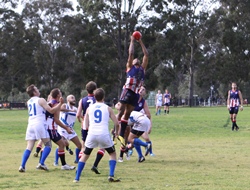 The USA and Finland have not met in International footy before. In cool and overcast weather this morning it was probably the Finns who felt a little more at home on the Western Oval.
The USA and Finland have not met in International footy before. In cool and overcast weather this morning it was probably the Finns who felt a little more at home on the Western Oval.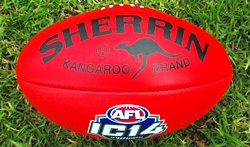 World Footy News Women’s World Rankings
World Footy News Women’s World Rankings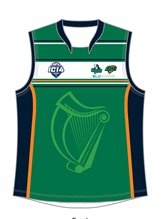
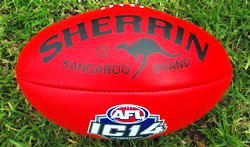 Cam Holmes takes a look at the World Footy News World Rankings and how they may change during the first two rounds of IC14. More info on how they are calculated and links to the results used to calculate them can be found at
Cam Holmes takes a look at the World Footy News World Rankings and how they may change during the first two rounds of IC14. More info on how they are calculated and links to the results used to calculate them can be found at  Following today's launch the International Cup teams paraded from Federation Square to the MCG. Decked out in team uniforms and following their nation's flags and banners the 18 countries marched joyfully to the home of Australian Football, the MCG.
Following today's launch the International Cup teams paraded from Federation Square to the MCG. Decked out in team uniforms and following their nation's flags and banners the 18 countries marched joyfully to the home of Australian Football, the MCG.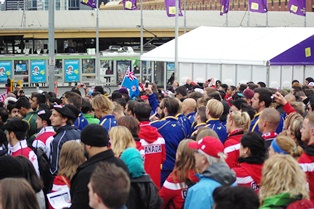 The IC14 launch took place this afternoon at Federation Square in front of the competitors of the many countries and nationalities competing in the tournament, as well as international footy fans, friends, family and interested onlookers.
The IC14 launch took place this afternoon at Federation Square in front of the competitors of the many countries and nationalities competing in the tournament, as well as international footy fans, friends, family and interested onlookers.

 RSS news
RSS news Twitter
Twitter Facebook
Facebook